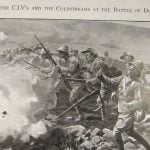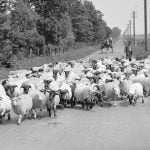James Sandy displayed remarkable talents for inventing all sorts of different kinds of objects which he made while occupying a circular bed he had created with raised sides which allowed him to use turning lathes, table vices and tools.
His genius for practical mechanics was legendary. He was skilled in all sorts of turning, and constructed several very curious lathes, as well as clocks and musical instruments of every description, admired for the sweetness of their tone as well as their beauty. He excelled too in the construction of optical instruments, and made some reflecting telescopes, the specula of which were considered to be as good as any produced by even the most eminent London fabricators.
He suggested some important improvements in the machinery for spinning flax; and was the inventor of a special type of wooden-hinged snuff box pivoting on a concealed metal rod which did not get clogged with grains of snuff. When the box was closed it also remained airtight. Generally called Laurencekirk boxes, where they were manufactured, some were purchased and sent as presents to the royal family. To his other abilities he added an accurate knowledge of drawing and engraving, and in both these arts produced work that was considered to be of the highest quality.
His curiosity, which was unbounded, prompted him to hatch different kinds of bird’s eggs by the natural warmth of his body, and he afterwards reared the motley brood with all the tenderness of a parent; so that, on visiting him, it was not unusual to see various singing birds perched on his head, and warbling the artificial notes he had taught them.
For upwards of fifty years he only left his bed three times, and on these occasions his house was either flooded or threatened by fire.
Naturally possessed of a good constitution, and with an active and cheerful character, his house was the general coffee room of the village, where all the affairs of the world were discussed.
After his death, Sandy’s skull was disinterred and taken to Edinburgh for examination. In those days, the practice of phrenology was widespread, whereby it was thought that much could be learned from the size of the skull, and it is believed that Sandy did have a larger than normal head.
A local poet, John Smith, known as ‘Auld C’, recorded the event in verse:
Phrenologists were tickled sore
As o’er his cranium they’d pore;
And Reekie billies were sent o’er
Tae beg his skull-
They howked it up an’ aff it bore,
The fowk tae gull.
‘Tis there an’ labelled tae this day
Varnished tae keep it frae decay.
Sources: Cateran's Common Wealth



